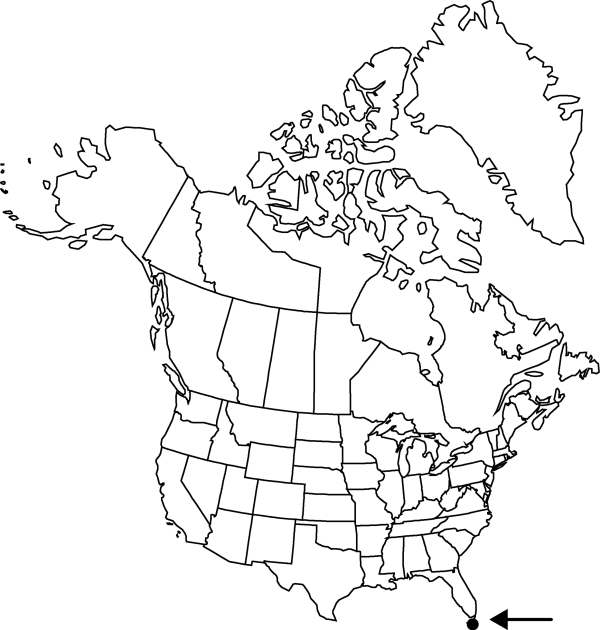Difference between revisions of "Opuntia triacantha"
Hort. Brit., 172. 1826.
FNA>Volume Importer |
FNA>Volume Importer |
(No difference)
| |
Revision as of 22:22, 16 December 2019
Shrubs, prostrate (to erect), clambering, to 0.6 m. Stem segments easily detached, green, flattened, elliptic, 5–18 × 3–7 cm, slightly tuberculate, glabrous; areoles 3–4 per diagonal row across midstem segment, subcircular, 4 mm diam.; wool whitish. Spines 1–3(–4) per areole, ± evenly distributed on stem segment, porrect to spreading, gray to whitish or cream, tipped black, straight, acicular, to 40 mm, barbed. Glochids yellow, aging brown, 4–9 mm. Flowers: inner tepals yellow throughout, 20–25 mm; filaments pale green to yellow; anthers yellow; style pale green or white, pink tinged; stigma lobes color unknown. Fruits red, ovoid to obovoid, 25–30 × 15–20 mm, fleshy, glabrous, bearing few areoles, spineless. Seeds tan, subcircular, somewhat flattened, 2.5 mm diam.; girdle protruding less than 1 mm. 2n = 22.
Phenology: Flowering year-round.
Habitat: Sandy areas on old limestone reefs, openings in tropical forests
Elevation: 0 m
Distribution

Fla., West Indies.
Discussion
Opuntia triacantha occurs in the flora area only on Big Pine Key, Florida. It is in the Center for Plant Conservation’s National Collection of Endangered Plants.
Selected References
None.